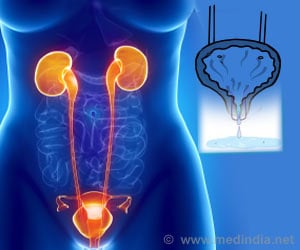Water-jet nozzles are a source of hospital superbug cross-contamination. P. aeruginosa occurs in soil and freshwater, but it can also thrive on moist surfaces in hospitals, leading to various infections in patients.

‘Multidrug-resistant P. aeruginosa bacteria are transmitted within the patient community, and the infection spreads within hospitals via contaminated electric toilet nozzle.’





"This is the first report of hospital transmissions associated with electric toilets and could have major implications for infection control," says Dr Itaru Nakamura from Tokyo Medical University Hospital in Japan who led the research."If water-jet nozzles are a source of hospital superbug cross-contamination, additional interventions - such as modified hand hygiene practices and toilet disinfection protocols - may be needed to stem the risk of transmission among healthcare providers and patients alike."
More than 80% Japanese households use electric toilets with an integrated bidet, which flush automatically. The main feature is a nozzle the size of a pencil that comes out from underneath the toilet seat and squirts water to wash the bottom and clean the toilet. The nozzle is also self-cleaning and cleans itself before and after every operation.
P. aeruginosa naturally occurs in soil and freshwater, but it can also thrive on the moist surfaces in hospitals, leading to opportunistic infections in weakened and ill patients that could develop into life-threatening conditions like pneumonia or sepsis.
Because of the overuse of antibiotics, these bacteria have evolved the ability to withstand attempts to treat infections with drugs that once killed them. And infections caused by MDRP bacteria are becoming more common in both the community and hospitals.
Advertisement
In this study, researchers investigated the presence of multidrug-resistant bacteria recovered from the waterjet-nozzles of electric toilets in a hematology ward of Tokyo Medical University Hospital between September 2020 and January 2021.
Advertisement
Using genetic fingerprinting techniques, they looked to see whether the strains of MDRP from the three infected patients were the same as the environmental MDRP strain sampled from the toilet nozzles. They found the samples matched, with strain 'ST235' dominating in all the samples--suggesting that transfers to and from patients were happening.
"In short, our findings imply that multidrug-resistant P. aeruginosa bacteria were being transmitted within the patient community, and critically that the infection may be spread within hospitals via contaminated electric toilet nozzles", says Dr Nakamura.
"With good hospital hygiene, which includes handwashing and environmental cleaning, we can control the spread of these pathogens, especially within in settings where patients' immune systems are compromised."
The authors point out that this was only a small study in a single hospital ward. They also highlighted several limitations including that the genetic analysis was not able to distinguish the direction of transfer, whether it is from the patient to the water-jet nozzles, or from those nozzles to the patients.
Source-Eurekalert







